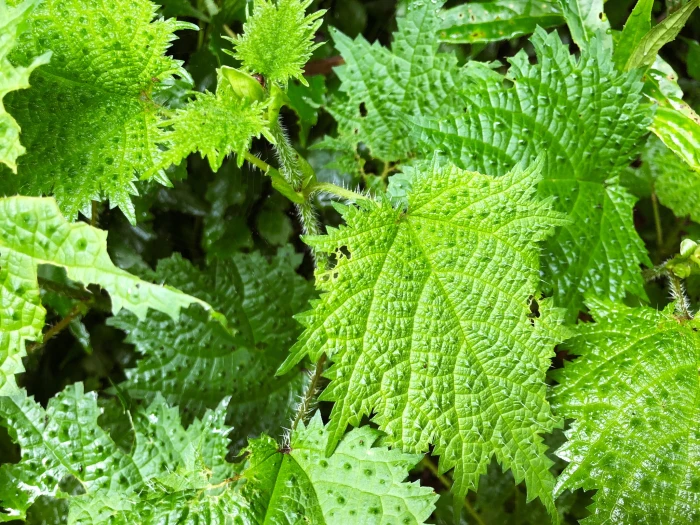Thunberg’s Nettle
(Urtica thunbergiana)
Thunberg’s Nettle (Urtica thunbergiana)
/
/

Cheng-Tao Lin
CC BY 4.0
Image By:
Cheng-Tao Lin
Recorded By:
Copyright:
CC BY 4.0
Copyright Notice:
Photo by: Cheng-Tao Lin | License Type: CC BY 4.0 | License URL: http://creativecommons.org/licenses/by/4.0/ | Rights Holder: Cheng-Tao Lin | Publisher: iNaturalist | Date Created: 2018-08-31T08:34:15-07:00 |

























Estimated Native Range
Climate Requirements
| • Precipitation | 98" - 117" |
| • High Temp. | 63°F - 85°F |
| • Low Temp. | 23°F - 51°F |
Summary
Urtica thunbergiana, commonly known as Thunberg’s Nettle, Japanese Stinging Nettle, or Greater Nettle, is a perennial herb native to moist, shaded environments in forests and grasslands, as well as along riverbanks in East Asia, including China, Japan, and Korea. This species typically grows rapidly to a height of 3-7 feet (0.9-2.1 meters) and is characterized by its serrated leaves and green, inconspicuous flowers that bloom in the summer. The plant is covered with stinging hairs that can cause a painful reaction upon contact with skin.
Thunberg’s Nettle is valued for its medicinal properties, as it has been traditionally used to treat various ailments. It is also used as a culinary herb in some cultures, although caution is advised due to its stinging hairs. In cultivation, it prefers part shade and medium draining clay or loam soils, with medium water requirements. While it can be an interesting plant for a naturalistic garden or for use in herbal medicine, Urtica thunbergiana is known to be invasive outside its native range, and gardeners should check local regulations before planting.CC BY-SA 4.0
Thunberg’s Nettle is valued for its medicinal properties, as it has been traditionally used to treat various ailments. It is also used as a culinary herb in some cultures, although caution is advised due to its stinging hairs. In cultivation, it prefers part shade and medium draining clay or loam soils, with medium water requirements. While it can be an interesting plant for a naturalistic garden or for use in herbal medicine, Urtica thunbergiana is known to be invasive outside its native range, and gardeners should check local regulations before planting.CC BY-SA 4.0
Plant Description
- Plant Type: Herb
- Height: 3-7 feet
- Width: 2-3 feet
- Growth Rate: Rapid
- Flower Color: Green
- Flowering Season: Summer
- Leaf Retention: Deciduous
Growth Requirements
- Sun: Part Shade
- Water: Medium
- Drainage: Medium
Common Uses
Butterfly Garden, Edible*Disclaimer: Easyscape's listed plant edibility is for informational use. Always verify the safety and proper identification of any plant before consumption.
Natural Habitat
Moist, shaded environments in forests, grasslands, and along riverbanks in East Asia
Other Names
Common Names: Japanese Stinging Nettle, Greater Nettle
Scientific Names: Urtica thunbergiana
GBIF Accepted Name: Urtica thunbergiana